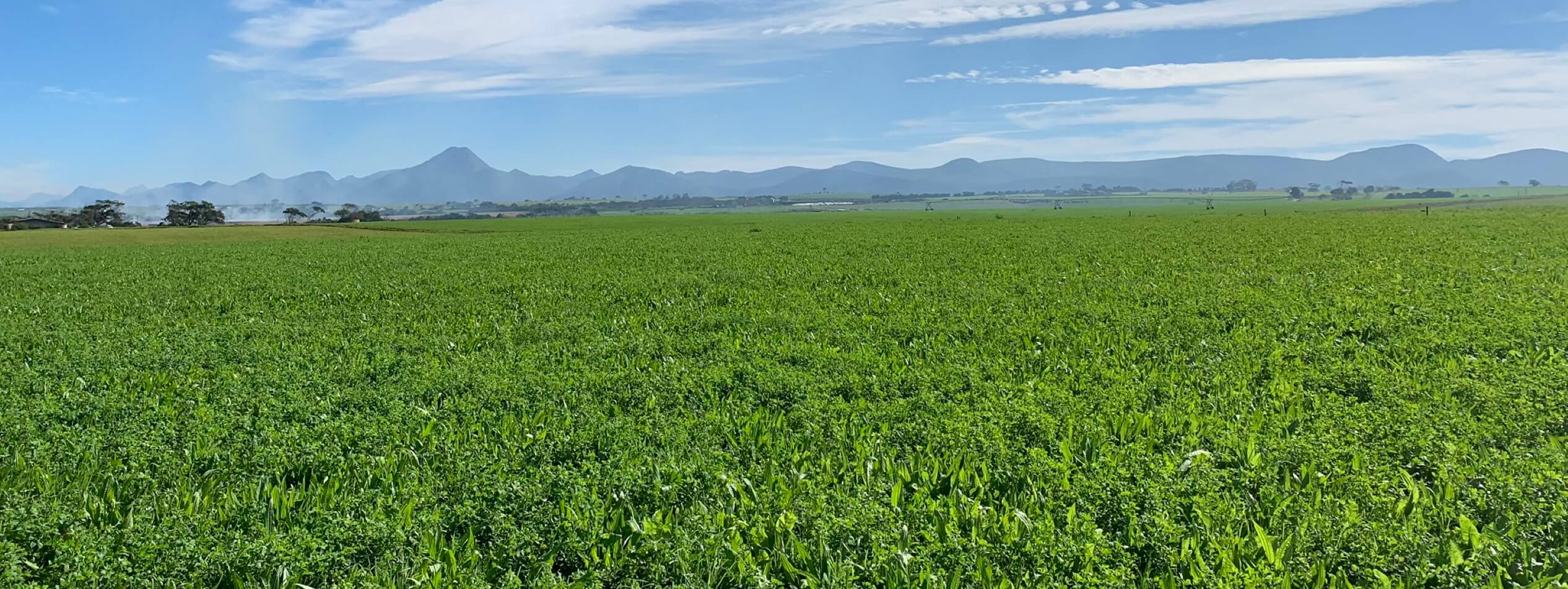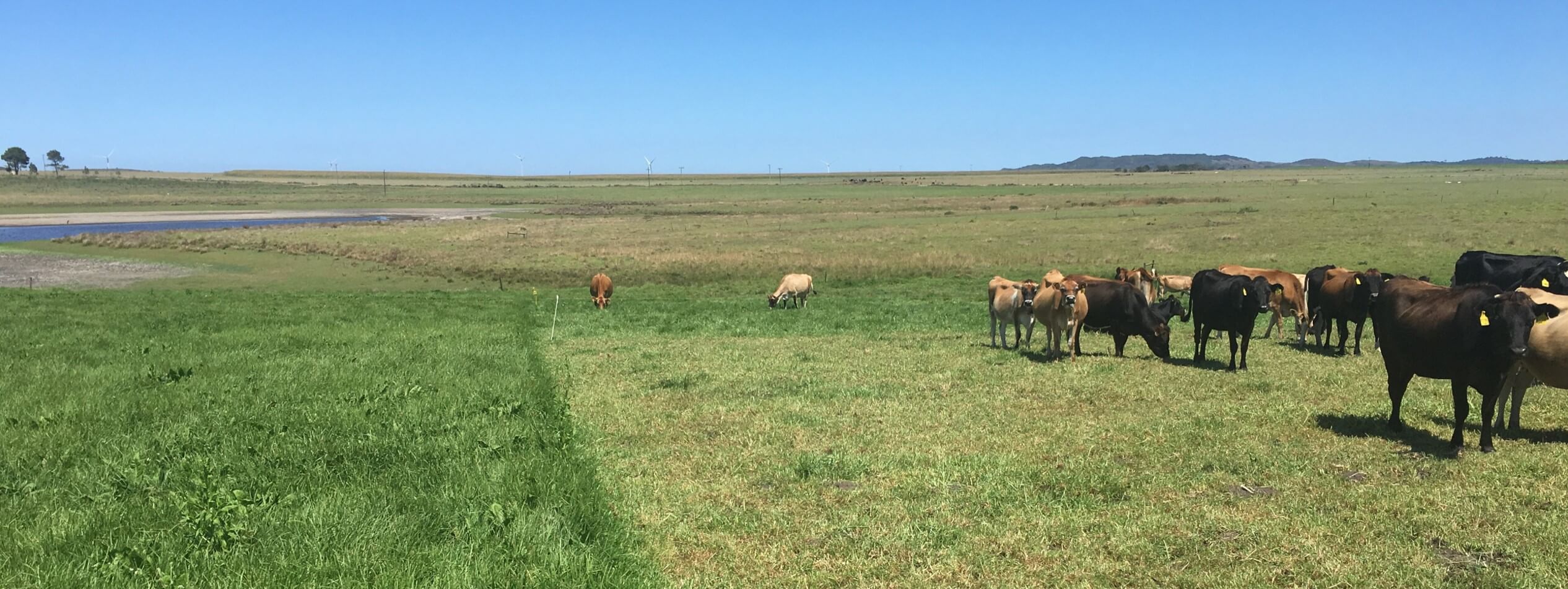I am often asked what the most important key is to a sustainable pasture-based dairy farm. There is no one answer to this as farms are way too complex for there to be any one key. That said, if I was forced to identify one of the most important indicators that a farm is implementing sustainable practices, it would have to be whether optimal farm cover is being maintained. The one caveat – farm cover should be maintained through good grazing management, and not achieved through over-fertilisation.
Farm cover is the average height/mass of grass across the farm at any given point in time.
What is farm cover?
Farm cover is the average height/mass of grass across the farm at any given point in time. It gives an idea of how much grass is available for the cows, but it is also an important indication of how much leaf surface area there is for photosynthesis on the farm.
In order to know the farm cover, it is imperative that pasture growth is measured and monitored. This is already the first key to why it is important – if a farmer knows their farm cover, it means they are measuring their pastures. And we all know, you cannot manage what you do not measure.
Why farm cover?
There are three important things that farm cover indicates on a farm, all of which are interrelated:
1. Whether grazing is being managed optimally
A farm cover which is too low means that the grazing cycle is being rushed, and pastures are not being allowed to grow out to the optimal height before being grazed. A farm cover which is too high means that pastures are getting away from the farmer, and opportunity is being lost through pastures losing quality. The correct farm cover indicates that the grazing cycle is correct and that pastures are being well-utilised. There are other indicators that are also important to consider, but farm cover gives a good overview.
Grazing management: The key to sustainable pasture-based farming
2. Whether carbon is being pumped into the soil
As mentioned earlier, farm cover is a basic indicator of the amount of photosynthesis happening on the farm. Carbon is moved from the atmosphere to the soil through photosynthesis. The more photosynthesis is taking place, the more carbon is being transferred into the soil. Thus, the higher the farm cover, the better the farm’s carbon pump is working.
3. Whether optimal growth rates are being achieved
Grass grows at its fastest when it has maximum photosynthesis. Photosynthesis is important for soil carbon, but it is also important to growing sufficient grass. One of the ways in which excessive fertiliser use can be reduced is through growing grass with grass. A big reason people use excessive fertiliser is to try force grass to grow quicker. When farm cover is maintained at optimal levels, the result is that grass will grow at optimal rates, removing the need for forced growth through fertiliser.
Sufficient, good quality pasture is fundamental to sustainable pasture-based dairy farming, hence needing to manage grazing optimally. Building soil carbon is also imperative to regenerative farming practices, and therefore pastures must be managed in a manner that increases soil carbon.
What is the optimal farm cover?
The optimal farm cover will differ from farm-to-farm due to numerous reasons, the most important of which include pasture species mixture and climate conditions. The optimal farm cover can be worked out by first assessing the optimal grazing height of the particular pasture mixture – for grass-dominated pastures this might be based on reaching the correct leaf-stage and before canopy closure. For lucerne-based pastures, it might be based on ensuring that lucerne reaches the correct stage of maturity. Based on this assessment, the corresponding height/mass at which pastures should be grazed is determined.
The second assessment is the desired height/mass to which pastures should be grazed. This will be based on leaving enough residue to ensure quick regrowth, but not leaving so much as to result in under-utilisation of pastures. Once these two heights/masses have been determined, the difference between the two, divided by two and added to the residual gives the optimal farm cover.
It is best explained by way of example. A lucerne-based, multispecies pasture, which should be grazed at 3 400 kg/ha and grazed down to 1 600 kg/ha. The difference between the two is 1 800 kg/ha. This divided by two is 900 kg/ha, which added to the residual height is 2 500 kg/ha. This would therefore be the desired farm cover, assuming the whole farm had the same type of pasture. Farm cover should ideally be calculated on a regular basis, based on a weighted average of each pasture on the farm.
How is optimal farm cover maintained?
Now that the importance of farm cover has been emphasised, the important question is how to maintain it. The first key is consistent monitoring and measurement. Once the desired cover has been determined, the current farm cover needs to be continually checked against it.
When the cover is too low, the pastures need time to grow out. Therefore, no matter what the feed demand on the farm is, the grazing cycle needs to be slowed down so that the cover has time to build. This can mean supplementing with roughage, even at times when it seems as though there is enough grass. I realise this can be quite a challenge for a farmer to wrap their head around, but once the importance of farm cover is understood, it is easy to make the decision to feed in this context. The long-term gain far outweighs the short-term cost.
When farm cover is too high, it is important that the grazing cycle is sped up. One of the easiest ways to do this is by removing certain pastures to cut and bale for the fodder bank. Excess farm cover will normally mean there is more than enough grass on the farm at that point in time, which is always a good opportunity to store that food for future use.
Conclusion
Farm cover is a key indicator of sustainable pasture-based farm management. It is directly associated with one of the other keys – healthy soils. Good grazing management, resulting in optimal farm cover benefits the farmer, the soil, the cow and the environment.
- A carbon footprint assessment for pasture-based dairy farming systems in South Africa - 2024-02-07
- What progress have farms participating with Trace & Save made over the past 10 years? - 2023-09-06
- Carbon footprint reduction over time: Lessons from pasture-based dairy farms in South Africa - 2023-09-04


